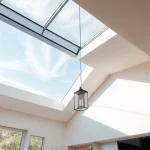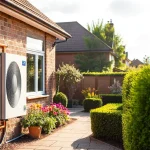Fibre cement board stands out as a modern solution balancing durability, safety, and design flexibility for construction projects. Its resistance to moisture, fire, and pests ensures longevity across diverse climates, reducing maintenance demands. Beyond practical benefits, fibre cement board offers cost-effective options and versatile aesthetics, making it a smart choice amid various building materials. Understanding these advantages helps builders and architects select a material that meets both performance and budget needs effectively.
Key Benefits of Fibre Cement Board in Construction Projects
Fibre Cement Boards offers numerous advantages that have made it a preferred material in modern construction. One of the primary benefits of fibre cement board is its exceptional durability. Resistant to fire, moisture, and pests, it ensures long-lasting structural integrity that few alternatives can match. This durability translates into lower maintenance costs and greater building lifespan, important factors in achieving sustainable construction goals.
Also read : Do you really need an architect for a successful loft conversion?
Another key reason to choose fibre cement board is its versatility. It can be used for cladding, roofing, and interior walls, making it a flexible solution for diverse architectural designs. Additionally, its non-combustible nature provides superior fire resistance compared to many traditional materials, contributing significantly to building safety standards.
The environmental impact also underscores the benefits of fibre cement board. As a material that incorporates cement, sand, and cellulose fibers, it poses fewer health risks and is recyclable, aligning well with modern construction’s increasing emphasis on eco-friendly practices.
Topic to read : Creating a Pet-Friendly Garden in Suburban Nottingham: Must-Have Features for Safety and Fun!
Compared to alternatives like wood or vinyl, fibre cement board stands out for its combination of strength, weather resistance, and minimal maintenance. These fibre cement board advantages make it a prudent choice for builders aiming for reliability without sacrificing design flexibility.
Durability and Longevity of Fibre Cement Board
Fibre cement board durability is one of its most compelling advantages. This material offers superior resistance to moisture, rot, and insects, which are common culprits that typically degrade building components. Unlike traditional wood-based materials, fibre cement boards do not absorb water, significantly reducing the risk of swelling, warping, or mold growth. This inherent resistance ensures the boards maintain structural integrity in wet or humid environments.
When considering weather resistance, fibre cement board stands out for its capacity to withstand harsh climates—from intense sun exposure and heavy rainfall to freezing temperatures. Its composition allows it to expand and contract minimally with temperature changes, preventing cracks or deterioration over time. As a result, buildings clad in fibre cement boards perform reliably across diverse environments, including coastal areas prone to salty air and inland regions subject to seasonal weather swings.
Real-world longevity observed in existing projects further confirms these benefits. Many constructions utilizing fibre cement boards have been standing strong for decades, retaining their appearance and function with minimal maintenance. This long-lasting performance makes fibre cement board a trusted choice for builders aiming to invest in long-lasting building materials that combine durability with aesthetic appeal.
Fire Resistance and Safety Features
Fibre cement board is renowned for its fire resistant building materials properties, making it a preferred choice in modern construction. One of its key attributes is that it is non-combustible, meaning it does not ignite or contribute to the spread of fire. This characteristic significantly enhances the fire safety of any building where it is used.
In terms of compliance, fibre cement board meets stringent fire safety regulations, which are essential for both residential and commercial properties. Builders and architects often select fibre cement boards because they help achieve necessary fire ratings without compromising design flexibility. This compliance ensures that structures are better protected against fire hazards, reducing risks to life and property.
The benefits extend beyond regulation adherence. Using fibre cement board in construction improves the overall safety profile of buildings by offering greater resistance to high temperatures compared to traditional materials. This makes fibre cement board an excellent option for walls, ceilings, and exterior cladding, where fire protection is critical. In commercial buildings, where fire codes tend to be more rigorous, fibre cement board fire safety features provide peace of mind to occupants and property owners alike.
Low Maintenance Requirements
Fibre Cement Boards stand out among low maintenance construction materials due to their durability and resilience. One key advantage is the significantly reduced need for repairs and upkeep over time. Unlike traditional wood or plaster materials, fibre cement boards resist common issues such as rot, warping, and insect damage. This means that builders and homeowners can enjoy long-lasting structural integrity with minimal intervention.
When considering the maintenance of fibre cement board, it is important to note that these boards typically require minimal painting, sealing, or treatment. Their composition naturally protects against moisture and fungal growth, which are usual culprits behind accelerated wear. Painting is often only necessary for aesthetic preferences rather than protection, reducing the ongoing costs and labor associated with upkeep. This level of durability directly translates into cost savings, making fibre cement boards an economical choice for both residential and commercial projects.
Selecting fibre cement boards for construction ensures a balance of aesthetic appeal and practicality, emphasizing long-term performance with fewer maintenance demands. The ability to withstand environmental stresses without frequent treatment or repair not only supports sustainable building practices but reduces the total cost of ownership throughout the lifecycle of a building.
Versatility in Design and Applications
Fibre cement boards stand out as versatile building materials due to their impressive range of finishes, textures, and colours. Whether you want a smooth, painted surface or a textured, natural look, fibre cement boards offer options that adapt easily to different design visions. This flexibility allows architects and designers to experiment and achieve unique aesthetics without compromising durability.
In terms of design flexibility, fibre cement boards are suitable for a variety of architectural styles—from modern minimalism to classic and rustic exteriors. Their adaptability is evident in both new constructions and renovation projects, making them a practical choice across multiple contexts.
The scope of fibre cement board applications spans both interior and exterior uses. Externally, they serve as durable cladding, weather-resistant and low-maintenance. Internally, they provide fire-resistant and moisture-resistant wall panels or ceiling linings, which enhance safety and longevity in residential or commercial buildings. This multifaceted application range highlights why fibre cement boards remain a preferred option among versatile building materials.
Cost-Effectiveness for Construction Projects
When considering cost-effective building materials, fibre cement board consistently stands out as an economical choice. Its competitive fibre cement board price makes it more accessible than many traditional siding and panelling options, such as natural wood or high-end vinyl. This affordability does not mean compromises in quality; rather, it provides reliable durability at a moderate upfront cost.
Investing in fibre cement boards offers substantial long-term value. Unlike cheaper alternatives that may demand frequent repair or replacement, fibre cement is resistant to weather, fire, and pests. This durability translates into lower maintenance costs and fewer replacements, significantly improving the return on investment over a building’s lifecycle.
Experts estimate that projects using fibre cement boards can save up to 20% in maintenance and replacement expenses compared to wood-based sidings. Additionally, its compatibility with various construction styles enables flexible application without added costs. For those seeking affordable construction solutions that do not sacrifice longevity or performance, fibre cement boards are a prudent choice.
Comparing Fibre Cement Board with Alternative Materials
When deciding on fibre cement vs alternatives like wood, vinyl, or gypsum, several factors come into play, including durability, maintenance, and appearance. Fibre cement board stands out due to its resistance to moisture, fire, and pests, offering a longer lifespan than many traditional materials. Unlike wood, which can warp or rot, fibre cement board resists these issues without compromising strength. Vinyl, while low-maintenance, lacks the robustness and aesthetic appeal that fibre cement provides, especially in harsher climates. Gypsum boards, often used indoors, do not offer the moisture or weather resistance fibre cement boards bring to exterior applications.
In terms of fibre cement board comparison, performance metrics favor fibre cement when considering longevity and resilience. It can endure extreme weather conditions and resists wear that might degrade other materials quickly. The aesthetic options are versatile as well, allowing finishes that mimic wood grain or smooth painted surfaces without the typical maintenance concerns.
Choosing between these materials requires assessing environmental exposure, budget, and desired appearance. Fibre cement boards tend to be a preferred choice where durability and minimal upkeep are priorities. They also provide a safer option, given their fire-resistant properties. For those weighing options, understanding the specific advantages and limitations of each material can lead to more informed decisions and ultimately better project outcomes.
Insights from Industry Professionals and Real-World Examples
Construction expert opinions consistently emphasize the versatility and durability of fibre cement board in modern building projects. Builders frequently highlight its resistance to elements like moisture and fire, making it an excellent choice for both exterior and interior applications. In testimonials, many report that fibre cement board significantly reduces long-term maintenance needs, which can result in considerable cost savings.
Case studies provide concrete evidence of the material’s effectiveness. For example, architects involved in coastal housing projects praise fibre cement board for its ability to withstand harsh weather conditions without warping or deteriorating. These real-world examples showcase its adaptability to diverse climates and structural demands, confirming why it has become a preferred material in construction.
Analyzing various experiences shared by construction professionals reveals consistent positive outcomes, such as enhanced structural integrity and improved insulation when fibre cement board is properly installed. These results underline how industry insights and practical applications align to validate its growing popularity.











